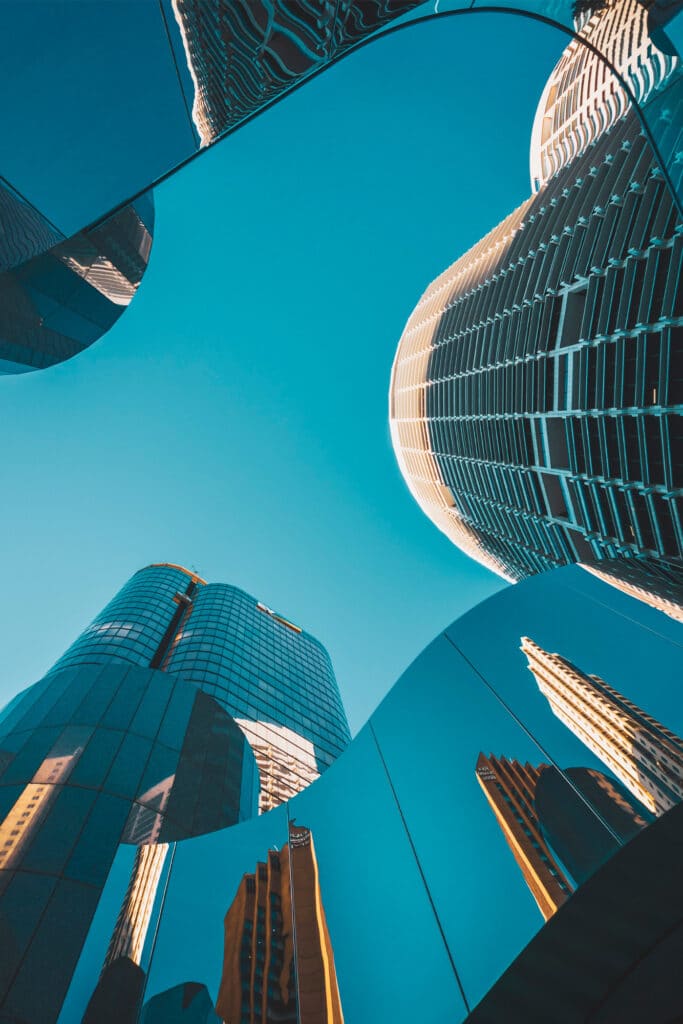Last December, Canon announced that they would be shuttering development and production of the DSLR sometime in the next few years. “The market needs are acceleratingly shifting to mirrorless cameras,” Canon’s CEO and Chairman Fujio Mitarai explained in an interview. As the largest producer of digital cameras, Canon’s announcement sent a shockwave through the industry—and this July, rumors began to swirl that Nikon would soon be following Canon’s lead, and similarly discontinuing their DSLRs.
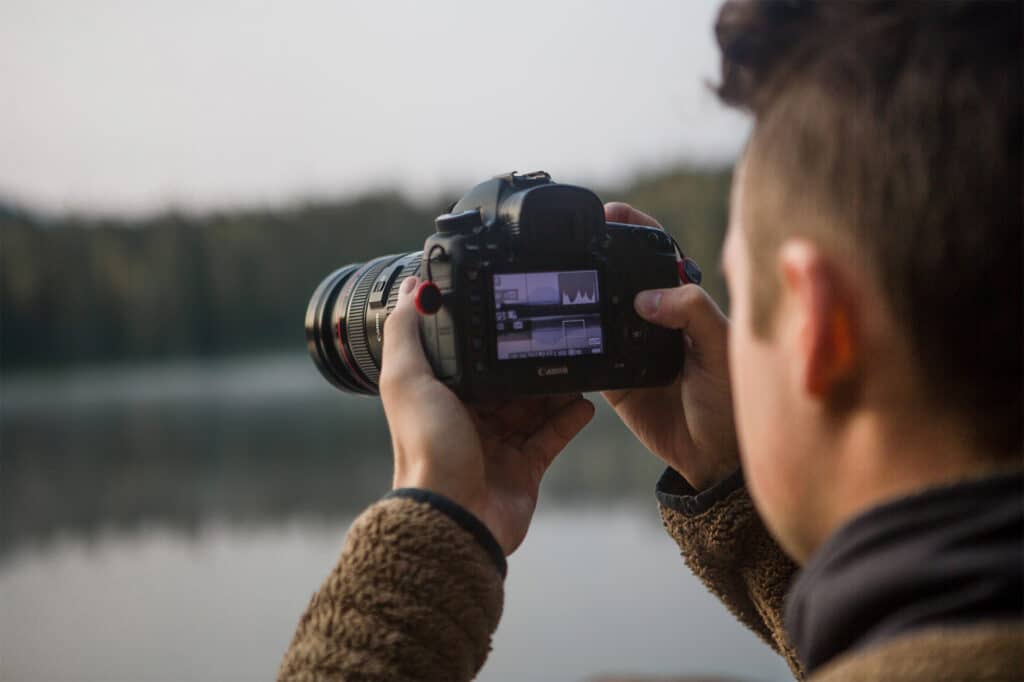
While Nikon hasn’t expressly confirmed the rumors—in fact, they issued a press release this month calling the reports “speculation”—there’s been a downward trend in development and production of the DSLR camera.
The DSLR (Digital Single Lens Reflex) camera became popular around the start of the new millennium, with companies like Nikon, Canon, and Fujifilm all producing DSLRs for the consumer-level market. With big sensors and lightning fast shutter speeds, the DSLR quickly became favored by many professional photographers.
Then came Instagram in 2010. Smartphones had been equipped with photographic capabilities for several years, but their capabilities had expanded with each iteration. By 2010, the iPhone had a camera with a 5 megapixel lens, capable of recording HD video. With the push of a new social media giant, clocking over 10 million registered users in its first year, smartphone imagery began to take over the internet.
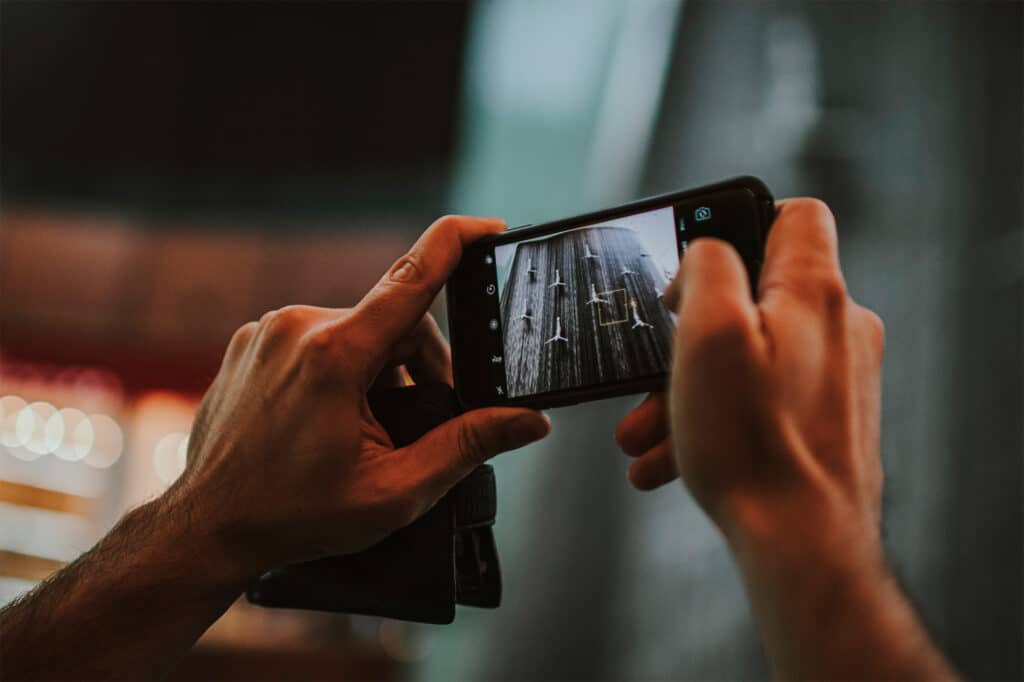
Beyond the ease of use for social media, the cell phone camera provided an immediacy, too. Suddenly, photographers didn’t have to carry around heavy cameras to capture the action around them. The award-winning photojournalist Ben Lowy documented war zones through his iPhone, and in his series “Uprising by iPhone” he wrote: “Small mobile phones are innocuous and enable a far greater intimacy with a subject. It was a liberating experience: to point and shoot with a small device, unhampered by camera bags full of gear and reacting to the world around me.” In 2012, Lowy’s iPhone photo of Hurricane Sandy was chosen as the cover image for Time Magazine.
Architectural photographer and writer Andrew Campbell Nelson feels similarly. “Phone cameras make documentation exceptionally accessible,” he says. Nelson alternates between a DLSR (the Canon 5D Mark 3), a film camera (the Nikon 35mm) and his iPhone, the latter being his most frequently used. “Intimate moments between family, friends, and lovers are being captured and saved every day because of the omnipresence of the [cell phone] camera,” he says “I believe that has to be a good thing, quality be damned.”

Quality, however, is subjective. With each generation of smartphones, lenses have been upgraded, and the potential for creating great images has expanded. In 2014, Apple launched their wildly successful Shot on iPhone campaign to highlight the exponentially rising quality of their lenses; in 2019, the company partnered with pop icons Selena Gomez and Lady Gaga to film music videos using only the iPhone. The lines between smartphone photographs and other digital cameras have become blurred, particularly as a plethora of software now offer the ability to “upscale” imagery, or increase resolution.
Certainly, photographers have been embracing these new tools. The British photographer Nick Knight, who famously prefers to refer to himself as an “image-maker”, told Business of Fashion in 2016 that “photography stopped years ago and we shouldn’t try and hold back a new medium by defining it with old terms. We can do things that Muybridge or Avedon or Mapplethorpe could never do because they are so far outside their particular craft.”
One of Knight’s most popular series, “Roses from my Garden,” are shot exclusively on his iPhone. Thanks to Topaz Labs, an AI-based software which enhances resolution, Knight was able to print the images in a large-scale format, blowing them up between 6 and 8 feet in size.
“I am happy everyone has a camera now,” he told Business of Fashion. “Photography was supposed to be the people’s medium. It bloody well wasn’t. There was one camera in our house and it belonged to my dad and we had to ask to borrow it on Saturday morning. But now everybody can make an image, and everybody can see it.”
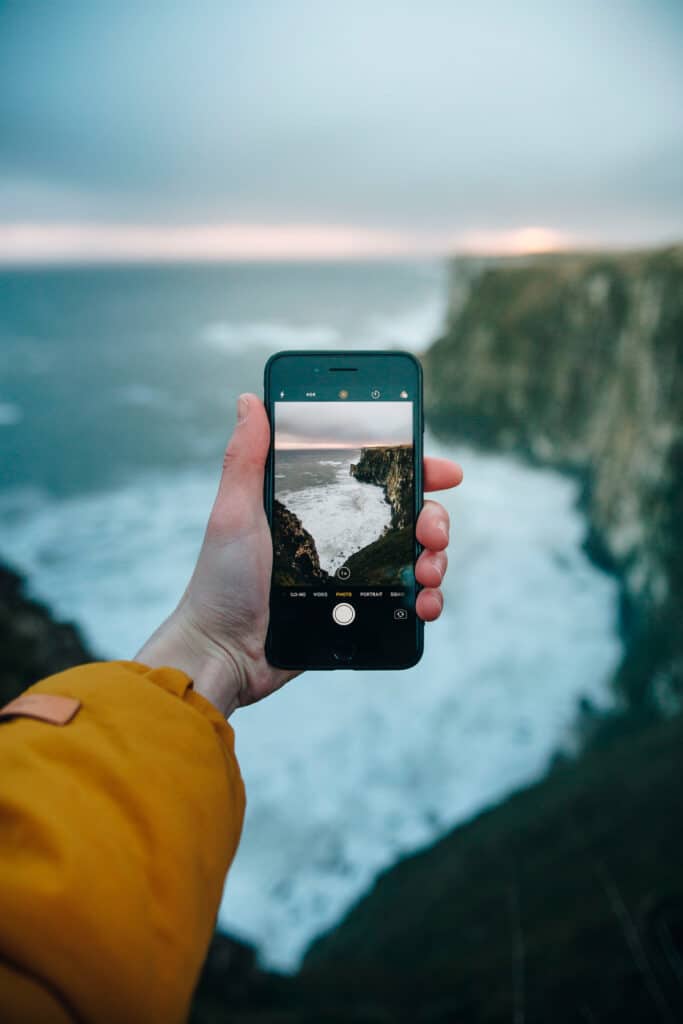
It’s undeniable that the omnipresence of smartphones has democratized the ability to partake in photography, particularly as the gap in quality between a smartphone camera and a traditional camera is no longer as wide as it used to be. But perhaps quality is the wrong metric to evaluate the two. Fred Ritchin, the Dean Emeritus of the International Center of Photography, believes that smartphone photography and analog photography are two separate mediums that cannot be conflated.
In his 2008 book After Photography, Ritchin compared the development of digital photography to the development of the automobile. “We didn’t know what to call [the automobile], so we called it a horseless carriage. We still have horsepower in our engines, even though there are no horses, because we just figured it’s a carriage without a horse. And in the same way I think digital photography is like a horseless carriage,” he says. “It’s not really photography anymore; it’s something else. It’s another medium, or series of mediums, but we don’t know what to call it yet. We’re calling it digital photography, when in a lot of ways it has very little to do with photography, which is now called analog photography.”
Regardless of the nomenclature, digital photographs reign supreme in terms of sheer output. The consulting firm Rise Above Research estimated that in 2022, people will take roughly 1.5 trillion photos worldwide. If everything is photographed, then what value does any individual photograph have? “I think you have to distinguish when you say we’re photographing everything—I don’t think we are,” says Ritchin. He doesn’t believe that the boom in digital photographs will negatively impact the photographic market. “I think we’re making images of an awful lot of stuff, but we’re really not photographing everything with any kind of purpose, or selection, or framing, or point of view. It’s much more like absorbing experience in the form of an image and then sharing it.”
That’s not to say that Ritchin is against digital photography. “I think one of the exciting things about new media, which is something Marshall McLuhan wrote about, is when it hybridizes. It’s part movie; it’s part still. It’s two energies coming together, in two perspectives, coming together. So DSLRs gave you an authority of the image that’s more ‘professional looking’. But the weird thing is I think some of the most effective photographs now worldwide are the more amateurish looking ones, the ones that are more raw.”
Nicolas Gillet, the marketing director for Nikon France, says that as of right now, Nikon is still producing reflex cameras. Gillet doesn’t believe that smartphones have eradicated the need for the DSLR; in fact, he says, they are complementary to each other. “It is obvious that smartphones have democratized the creation of images as much as the social networks that host these images. Some people get a taste for it and want to go further in their artistic expression. They often realize that they need a dedicated device,” he says. “Beyond the image quality and the ability to change lenses according to those needs, the ergonomics are quite different. At Nikon, we even have a term for this aspect: “cameraness.” The physical feel of the grip, the comfort maintained after several hours of use, the quality of subject tracking in a viewfinder, the customization of functions directly on the camera are elements that should not be underestimated when choosing your equipment.”
Nelson concurs. Despite the ubiquity of camera phones, Nelson believes the DSLR holds an important place in the world of photography, and cites his need for a specialty tilt-shift lens in order to capture architecture—something his phone cannot do. (“I’m dreaming of the day a thin, phone-sized camera can do a tilt shift lens,” he says.)
But there’s another element at play, which extends beyond the world of cameras and photography. In the past decade, there’s been an analog renaissance, in part thanks to the power of nostalgia, and in part thanks to a yearning for the tangible. In the music industry, which was disrupted by the advent of streaming services, sales of vinyl records have consistently grown over the last decade; between 2020 and 2021, vinyl sales doubled. The market for instant analog photography, like Polaroid cameras, has also had an incredible resurgence. In 2021, Business Insider reported that the Fujifilm Instax camera was one of the highest selling cameras in the world. And Polaroid is embracing the hybridization of digital and analog by selling a printer that will turn iPhone images into Polaroid prints, referring to it as “a desktop darkroom.”
“The film photography is indeed a trend that seems to be growing. At Nikon we have no more film cameras since 2020 (with the end of the Nikon F6), but the second-hand market is very dynamic and the Nikon FM2, among others, is exploding,” says Gillet. “It’s hard to know how big this will be in the long run. The lack of physical feel of digital photography certainly plays a role in this trend, but many trends are cyclical.”
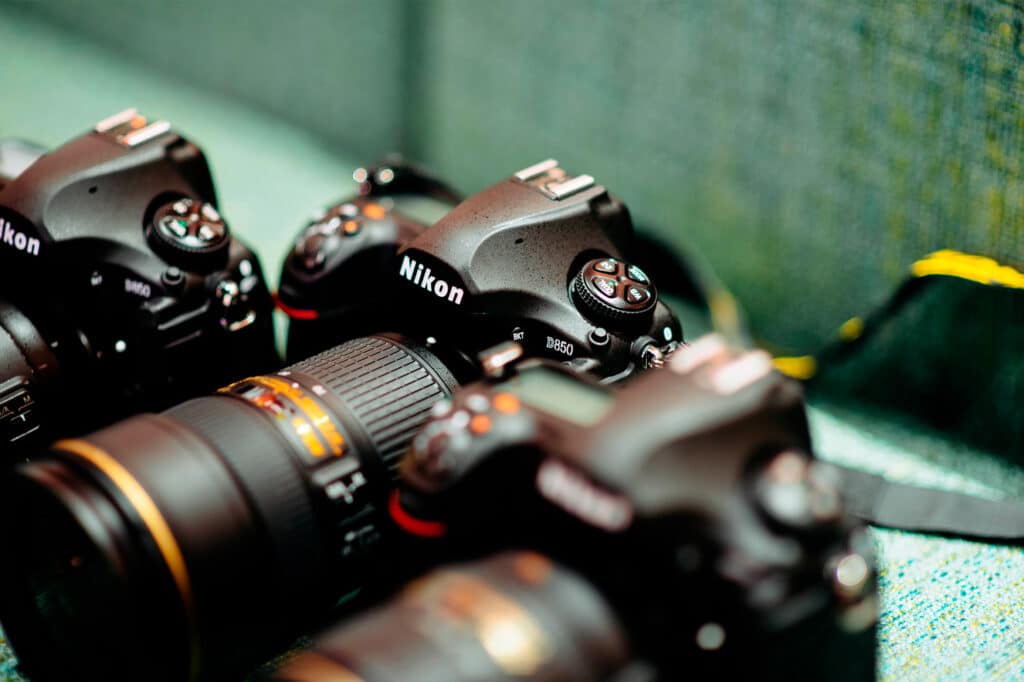
Ritchin believes that as photography and imaging trends towards the digital, and as NFTs have boomed, the analog will become more valuable. The market seems to agree: this year, the previous record for most expensive photo sold at auction was smashed by the sale of Man Ray’s Le Violon d’Ingres, which fetched $12.4 million in May. “My sense is that analog photographs are going to increase in value in lots of ways, and that digital imaging is going to find itself in things like multimedia and virtual reality,” he says. “So I just wouldn’t say that the billions of images produced daily are equivalent to a [Jacques Henri] Lartigue photograph or a photograph by Dorothea Lange. I think those are different media.”
Ritchin references Walter Benjamin’s The Work of Art in the Age of Mechanical Reproduction, a prescient essay about art being devalued by endless reproductions. Therefore, Benjamin posits, the original is of the utmost importance. Similarly, says Ritchin, we can evaluate digital and analog photography through this lens. “There’s one Mona Lisa in Paris,” he says. “There could be 10 trillion postcards of it. But that doesn’t diminish the fact that there is a singular Mona Lisa that exists in the Louvre and people come all over the world for that singular experience as opposed to a postcard.” With photography, “a print is the appeal.” The individual touch by the photographer who printed it, and their techniques in the darkroom, make it the original worth going to the museum to see. There are digital photographs that hang in museums too, but the craft behind it is inherently different.
For now, DSLRs still remain available, but it’s clear that they are reaching extinction. Canon is focusing on mirrorless cameras as the future of digital photography, and it’s likely that the other major players in the photography market will follow suit. But it’s unlikely that digital photography will fully replace analog. In an increasingly digital world, the tangible has become more and more precious. For photography aficionados, there’s also nothing that can replace the alchemical experience of developing photographs in the darkroom, or the pride in being able to understand and operate a mechanical camera. The DSLR was an attempt to hybridize the experience (and quality) of traditional cameras with a digital output: but as the world of digital imagery expands and is no longer solely reliant on physical cameras perhaps that’s where the obsolescence lies.


